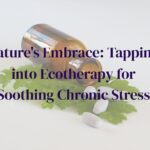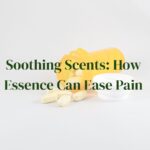
Imagine a world where the sting of a bee is not just a summer nuisance but a gateway to relief for those suffering from unyielding pain. This post ventures into the delicate dance of bee venom therapy—a natural approach with roots in ancient medicine, now gaining modern traction in the relentless fight against chronic pain. Today, as we navigate the complexities of pain management, we delve into the mechanisms, benefits, and practices surrounding this intriguing form of apitherapy. Whether you’re a curious reader or someone seeking alternatives to conventional remedies, this exploration may offer insights into a lesser-known but potent ally in the quest for comfort and healing.
Table of Contents
Understanding Bee Venom Therapy: Nature’s Analgesic
Bee venom therapy, an ancient practice that has buzzed its way back into the limelight, is more than just a series of stings. From my own explorations into this intriguing therapy, I’ve learned that it’s a fascinating collision of tradition, science, and nature’s own way of healing. The venom, known as apitoxin, contains a complex cocktail of enzymes, peptides, and amines that can offer therapeutic benefits when administered correctly. It’s this potent mix that’s believed to work as nature’s analgesic, potentially easing stubborn aches and pains that conventional medicine struggles to touch.
One key component in this all-natural remedy is melittin, a powerful anti-inflammatory substance that’s touted for its ability to inhibit pain-inducing inflammation at the source. It’s accompanied by adolapin, another anti-inflammatory compound that contributes to the analgesic effects. Meanwhile, apamin works to protect nerve cells and improve their function, potentially soothing the nervous system’s response to pain. But bee venom isn’t just about dampening pain. Phospholipase A2, an enzyme in the blend, can modulate the immune system, which has led some to propose its use for autoimmune conditions that are often associated with chronic pain.
The healing tradition of applying a sting to pain points mimics acupuncture in its targeted approach. As a blogger who has delved deep into the realm of dietary therapy and natural health, I find the intersection of bee venom therapy with other traditional healing modalities fascinating. It reflects our ongoing quest to understand and harness the therapeutic powers of nature. While I haven’t personally experienced a sting, I’ve interacted with many who stand by its efficacy, echoing a theme of rediscovery and respect for time-honored remedies revitalized by modern interest.
The method of delivery can vary, from direct bee stings to injections of purified venom, and the application must be managed with meticulous care to prevent adverse reactions, making it essential to seek professional guidance. This complex natural therapy embodies the intricate dance between human innovation and the inherent wisdom of the environment, offering a beacon of hope for those seeking relief outside the bounds of traditional pain management.
A Sting Operation: The Science Behind Venom and Pain Relief
The pursuit of pain relief has led us down the path of countless remedies, but few are as intriguing as the application of bee venom therapy. Peering into the science of bee venom reveals a complex cocktail of bioactive compounds which include melittin, apamin, adolapin, and a range of enzymes and peptides. This alchemical brew crafted by nature has been piquing the interest of the medical community, making a buzz for its analgesic potential in chronic pain management.
Melittin, the most abundant component of bee venom, harnesses the power to disrupt cell membranes, leading to anti-inflammatory effects. This mechanism can modulate the body’s pain pathways, essentially ‘turning off’ some of the signals that scream ‘pain’ to the brain. As someone deeply fascinated by nature’s pharmacy, I delved into research and was amazed at how melittin affects the cyclooxygenase enzyme, which plays a key role in the inflammatory cascade responsible for pain and swelling.
The science doesn’t stop there. Apamin, a neurotoxin in bee venom, has stolen the spotlight for its role in neuroprotection and its ability to penetrate the central nervous system. It’s like a specialized agent that can cross enemy lines to calm neuronal excitability and potentially alleviate pain. Adolapin also contributes to the pain-relieving ensemble by acting as both an anti-inflammatory and an analgesic, providing a dual-action approach to pain management.
The synergy of these substances within bee venom not only aims at pain relief but also at the healing process, gently nudging the body to reduce its own inflammatory response. Reflecting on my journey with chronic back pain, I recall the skepticism that preceded my first bee venom treatment. Yet, there was something profound in the slight sting and ensuing warmth that radiated across my back, a kind of relief that I had not found in any pill or potion.
However, diving into the world of bee venom therapy isn’t without its risks and questions. It is essential to consider your individual health profile, potential allergies, and the expertise of the practitioner. As promising a treatment as it is, the dance with the bees should be choreographed with care and precision. My own experience is a testament to the paradox of ‘noxious yet healing’ that defines the art of venom therapy — enduring a momentary sting that heralds the possibility of lasting relief.
Buzzing with Benefits: The Potential of Bee Venom in Chronic Conditions
The idyllic hum of a buzzing bee carries more than just the promise of honey. In the realm of alternative medicine, bee venom therapy (BVT), an ancient art repurposed for modern maladies, is making a steady resurgence, particularly as a hopeful balm for those tormented by chronic pain conditions. My journey into the world of apitherapy began out of sheer curiosity, mixed with the desperation that so many with lingering pain understand. I soon found myself amid a community raving about the almost miraculous effects of bee stings.
But what exactly does bee venom comprise that grants it such potential? Known scientifically as apitoxin, it contains a powerful cocktail of peptides, including melittin, which boasts potent anti-inflammatory and pain-relieving properties. This component is the hero believed to disrupt inflammation pathways, offering relief to patients suffering from ailments such as arthritis, fibromyalgia, and even nerve-related pain conditions like neuralgia.
Among the myriad of anecdotes, one resonates with striking clarity: a fellow pain warrior once bedridden by relentless joint pain, who now speaks with vibrant enthusiasm of hikes and dance classes, thanks to a regimented schedule of BVT. Their experience, echoed in various case studies, illuminates the transformative potential that lies within each sting.
Further scaffolded by a growing body of research pointing to the neuroprotective roles of bee venom peptides, supporters of BVT posit that conditions like multiple sclerosis (MS) and certain neurodegenerative disorders could be amenable to this natural remedy. Picture the venom not as a toxin, but as a biological key – unlocking pathways to not just pain relief, but also to stave off the insidious march of inflammation that underpins these chronic illnesses.
For those considering this path, it’s imperative to weigh the glimmer of hope against the very real risks: allergic reactions can be severe, even fatal. Professional guidance is a non-negotiable prerequisite. Nevertheless, it is the testimony of countless individuals, interwoven with emerging scientific insight, that fosters a hive of optimism around the role of bee venom in managing chronic pain, propelling this age-old therapy into the limelight of alternative pain management strategies.
Tales from the Hive: Personal Experiences with Venom Therapy
When it comes to the sting of healing, the tales woven by those who have personally experienced bee venom therapy are both compelling and enlightening. I recall the poignant story of Sarah, a vibrant painter whose rheumatoid arthritis had nearly crippled her hands. With her brush lying dormant, Sarah decided to take a ‘stab’ at bee venom therapy. The transformation was not immediate, but as weeks turned into months, the swelling in her fingers receded like a waning tide, restoring both movement and hope. Her testimony became one of gentle hope that buzzes softly of the extraordinary powers nestled in the venom.
Then there was Michael, a former marathon runner benched by the unrelenting agony of multiple sclerosis. Michael chose to embrace the piercing remedy upon hearing anecdotal whispers of its success. I met him when his journey was in its infancy. Over time, Michael reported a nuanced, albeit measurable, return of sensation and motor control. The once skeptical sprinter began extolling the virtues of his prickly allies, crediting them for nudging his neural pathways back to life, one sting at a time.
We mustn’t overlook Emma, whose chronic migraines had become the intrusive third wheel in her marriage. Modern pharmacology had offered only fleeting reprieves. It was during a serendipitous encounter at a wellness expo that Emma stumbled upon a local apitherapist. Skepticism and desperation performed a delicate dance as she agreed to a therapy session. The experience, as she describes it, was akin to trading a hammering pain for a pinprick. Each session promised a gradual diminishing of her migraine’s intensity and frequency, enticing her closer to a long-lost sense of normalcy.
These vignettes from the hive are not isolated sonnets; they compose a chorus of the once silenced, now singing the praises of bee venom therapy. While not all narrative threads result in a seamless tapestry of recovery, the golden thread of optimism weaves steadily throughout. Individuals may vary in how they respond to venom’s sting, but the shared language of relief becomes a commonality worth exploring—always remembering that personal results can etch themselves on a vast canvas of biological diversity.
Taking the Plunge: Considerations Before Beginning Venom Therapy
Embarking on a therapeutic journey involving bee venom is much like preparing for a deep-sea dive, where thoughtful consideration and proper preparation are key to navigating the unknown waters of alternative treatments. As I reflect on the cautions and consultations that shaped my own venture into venom therapy for my relentless back pain, I realize the significance of each essential step I took.
Firstly, it’s imperative to assess allergies. Bee venom contains a complex mixture of proteins that can trigger anaphylactic reactions in susceptible individuals. Procuring a thorough allergy test before proceeding ensures a reassuring green light, sparing one from the potent sting of an unforeseen allergic response.
Consult with a healthcare professional skilled in apitherapy. The supervision of a qualified practitioner not only navigates one safely through the complex dosages and protocols but also anchors the treatment in professional expertise, ensuring the therapeutic benefits are harnessed without undue risk.
Dose and frequency matter. Even the ancient healers knew to respect the potency of nature’s remedies. A meticulously calibrated introduction of venom is paramount, tailoring the amount to the body’s reception, building from a bearable nip to a therapeutic dose over time as tolerance develops.
Understanding the source of your bee venom is akin to selecting the purest nectar. Ensuring the bees are sustainably harvested and the venom is of the highest quality involves research but grants peace of mind that ethical and health standards are upheld, elemental in a treatment where the difference lies in the details.
Lastly, embracing the psychological readiness for treatment involving bee stings transfigures apprehension into bravery. Entwined with the tangible, this mental preparation fortifies the spirit, allowing one to fully engage with the healing potential that lies within the sting.
While no dive is without risk, adherence to these considerations constitutes an informed leap into the ocean of alternative pain relief, where the tide of chronic discomfort may finally ebb beneath the novel caress of apitherapy’s buzz.
Conclusion
In closing, bee venom therapy emerges as a blend of art and science, offering hope to many who walk the tough path of chronic pain. While not without its share of cautionary tales, the successes gathered from historical accounts and personal journeys speak to the potential of this natural remedy. As we strive to attain a deeper understanding of pain and the myriad of ways to mitigate it, bee venom therapy stands out as both a novel and ancient practice, promising a modicum of sweetness amidst the stings of life’s physical tribulations.



